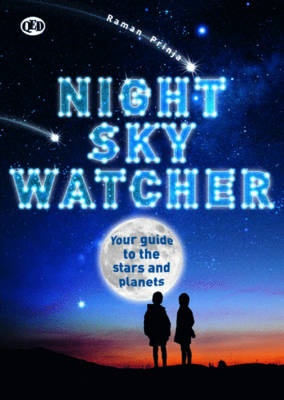Night Sky Watcher is a slim yet substantial 120 pages, this book comes inside a plastic case with an eye-catching silver zipped edge. It covers stars, planets, constellations, eclipses, meteors etc, and plenty of tips on how to make the most of your star-gazing time. A comprehensive contents, index and glossary are included.
I’m liking
A real highlight for me is the section on constellations, and the way each one is drawn at a decent size. There is an explanation of where the name came from, clear directions on how to find the pattern, and each major star is labelled.
Being from a science background myself, I appreciate it when resources use ‘proper’ measurements to say how big something is, instead of just comparing it to elephants, footballs fields, swimming pools, etc. For that reason, I liked the amount of objective factual information in this book, particularly the star names. Notwithstanding this, the format is clear and easy to read and understand. There are lots of great pictures, as you’d expect from a book of this type, and some simple and achievable ‘Things to Do’ (like putting a red lolly wrapper over your torch at night, as red light allows you to see without affecting your night vision). I also like the lists of dates / times of year that are expected to be the best for seeing meteor showers, eclipses, etc.
Things that made me go hmmmm
I assumed from the outside of this book that it would contain star charts, which it doesn’t. The other main drawback is that it is written from a Northern Hemisphere perspective, and in some cases, instructions for viewing from the Southern Hemisphere aren’t given.
The conclusion
I like this book as a colourful and easy-to read reference for lots of data about planets, stars and constellations. I think it would be great for children 7-12 years old, particularly those with an interest in astronomy.
Night Sky Watcher is available from Fishpond for around $18.


